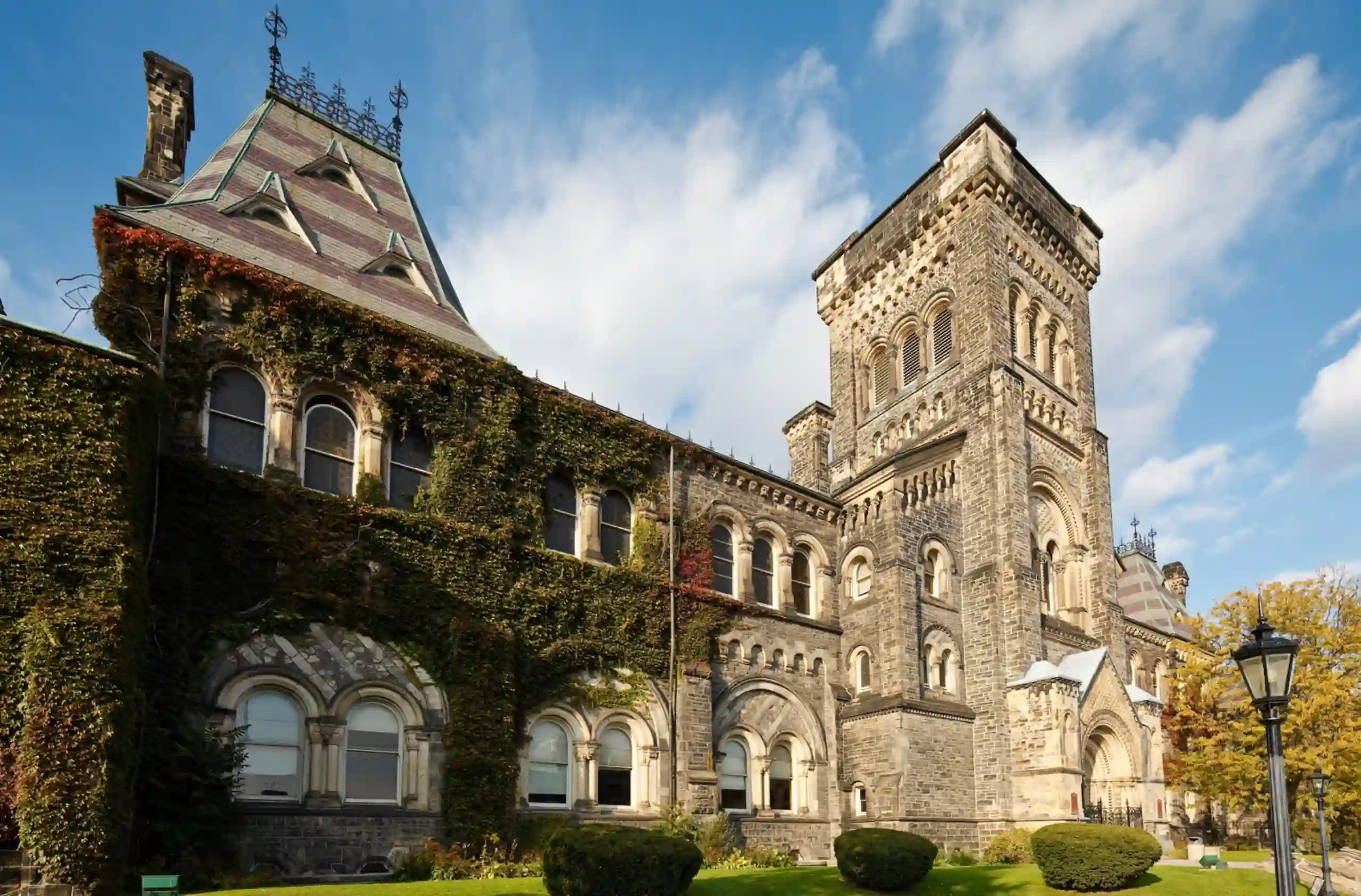Wondering ‘what is an undergraduate degree?’ Simply put, it’s the foundational post-high school education that sets the stage for your professional and academic future. From the basics to the subtle nuances, we’re about to unpack everything that makes up an associate or bachelor’s degree, and why it’s a critical stepping stone for your career or advanced studies. Get ready to dive deep into the world of undergraduate studies, where learning meets opportunity.
Key Takeaways
- An undergraduate degree is a foundational educational credential pursued after high school, often leading to enhanced career opportunities and serving as a preparation for advanced studies.
- Undergraduate education encompasses a variety of degree types and majors, with additional components like minors, and is provided by diverse institutions with different admission criteria, including academic grades and additional requirements such as interviews or portfolios.
- Financing an undergraduate degree involves considering tuition and living expenses, but there are several financial aid options available, including scholarships, bursaries, and work-study programs, to support students financially through their education.
Decoding the Undergraduate Degree

Imagine stepping into a new city without a map—it could be quite a daunting task, right? This can be similar to embarking on the path of higher education without understanding its foundation, the undergraduate degree. It’s more than just a certificate you earn after high school—it’s a passport to a promising career and a world of opportunities. An undergraduate degree serves as a cornerstone, laying the groundwork for one’s career in a chosen field.
The journey to earning an undergraduate degree involves careful consideration of your interests, potential employability, and increased responsibility. It also requires understanding an array of university-specific jargon, such as:
- Major
- Minor
- Elective
- Core requirements
- General education requirements
- GPA
- Transcript
- Registrar
- Academic advisor
But you don’t have to worry. We’re here to guide you through this exciting journey.
The Basics of an Undergraduate Degree
An undergraduate degree is akin to a golden ticket, granting access to the captivating world of higher education. It is a credential earned upon concluding post-high school education at higher education institutions such as universities, liberal arts colleges, and community colleges. The journey towards acquiring this degree equips students with a wealth of knowledge, skills, and experiences that shape their professional paths.
As an undergraduate student, you embark on a transformative journey that builds on your high school education, offering deeper insights into your chosen discipline. This foundational phase of your university education prepares you for the exciting opportunities that lie ahead for undergraduate students, be they as a graduate student in graduate school, professional careers, or innovative ventures.
Types of Undergraduate Degrees
Just as a toolbox contains different tools designed for specific functions, undergraduate education offers a variety of degrees, each with its unique design and purpose. Two common types of undergraduate degrees are associate and bachelor’s degrees. While associate degrees generally require around 60 credits and can be completed in two years if taken full-time, bachelor’s degrees usually require 120 credits and are typically completed over the span of four years.
The Bachelor of Software Engineering (BSE), for instance, is an undergraduate degree in the field of engineering. Regardless of the type of undergraduate degree you’re pursuing, the journey will be a unique mix of academic growth, personal development, and skill acquisition, preparing you for the future you aspire to.
Navigating the Canadian University System

The Canadian university system is a vibrant ecosystem of universities, colleges, and technical institutes, both publicly and privately funded. Each university has its unique character, offering a wide range of undergraduate programs catering to diverse interests. Whether you’re a budding scientist, an aspiring artist, or an entrepreneur in the making, there’s a place for you in the Canadian university system.
Education in Canada is regulated provincially, which means each province is responsible for its educational system without a federal accreditation authority. This diversity results in a rich tapestry of educational experiences across the country. The academic year typically begins in September and is split into two semesters, although some institutions offer trimester or quarter systems.
Understanding the Major
In the Canadian university system, a major is your main area of specialization—the primary field of study that defines the degree you will be awarded upon graduation. Think of it as the main dish in a meal, around which the rest of your courses—side dishes, if you will—revolve.
Choosing a major can be likened to setting your academic GPS. It steers your course through the world of undergraduate education, shaping the knowledge you acquire, the skills you develop, and the career path you eventually embark on. For a more interdisciplinary approach, students may choose to complete Combined Honours degrees, which require meeting the academic requirements of two distinct majors.
The Role of a Minor
While a major sets the course of your academic journey, a minor adds depth and breadth to it. In the Canadian university system, a minor is a secondary field of study that complements your major. It’s like choosing a side dish that enhances the flavor of your main course. A minor typically involves the completion of about 4.0 credits in a cohesive set of courses within the secondary field of study.
A minor adds diversity to your academic portfolio, enabling you to explore an additional area of interest or enhance your major with complementary knowledge. It’s an excellent way to customize your academic experience, making your undergraduate journey truly unique.
See below for the different Canadian study levels:
Admission Insights: Getting Into a Canadian University

Applying to university is a significant step on your academic journey. It’s like knocking on the door of opportunity and awaiting an invitation to enter. But what does it take to get that coveted admission offer? How do Canadian universities like the University of Waterloo, for instance, evaluate applicants?
At the University of Waterloo, applicants to full-time undergraduate programs should:
- Apply through the Ontario Universities’ Application Centre (OUAC) by the deadline, usually February 1 for most programs.
- Meet the admission requirements, which include specific high school courses or equivalents.
- In addition to academic grades, universities may also consider additional components such as personal statements, interviews, and portfolios.
Deciphering Admission Averages
Ever wondered how Canadian universities like the University of Waterloo calculate admission averages? It’s not a secret formula but a straightforward process that evaluates your academic performance. The admission average is determined by evaluating the grades from the top six Grade 12 U or M courses or equivalents, always incorporating all required courses for the program you’ve applied to.
Understanding the calculation of admission averages is crucial in strategizing your course load and managing your academic performance during your high school years. It serves as a guide, enabling you to aim for the grades that increase your chances of securing admission to your desired program.
Additional Admission Requirements
Beyond academic grades, Canadian universities often consider additional components in the admission process. These could include interviews, portfolios, and supplementary applications. For instance, the University of Waterloo considers personal statements, interviews, and portfolios during their admission process.
An Admission Information Form (AIF) is another crucial part of the application process at some universities. This form allows you to share your interests, extracurricular activities, and goals, which can influence both admission and scholarship decisions. It’s like a canvas where you paint a holistic picture of yourself, showcasing:
- Your academic achievements
- Your passions
- Your experiences
- Your aspirations
This comprehensive view of your profile can help the admissions committee get a better understanding of who you are as a person and what you can bring to their university.
The Path to Professional Programs
An undergraduate degree can be a stepping stone towards a professional career in fields like law, medicine, and teaching, among others. These professions require advanced studies beyond a bachelor’s degree. Admission to these professional programs requires not just an undergraduate program but also additional training such as a medical clerkship in the case of medical degrees.
Often, these professional programs require at least two or three years of undergraduate studies before admission. Thus, if you’re aspiring to join these professions, understanding the prerequisites and planning your undergraduate journey accordingly becomes crucial.
Financial Aspects of Undergraduate Studies
Embarking on an undergraduate journey is an exciting phase of life, but it also comes with significant financial considerations. The annual cost of tuition for undergraduate studies in Canada typically ranges between C$20,000 and C$30,000. Living expenses, including housing, food, and other necessities, are commonly estimated at around C$15,000 per year.
However, don’t let these numbers daunt you. The Canadian higher education system offers various financial aid options, including scholarships, bursaries, and work-study programs, to support students throughout their undergraduate journey. These resources play a crucial role in making undergraduate education accessible and affordable.
Scholarships and Bursaries
Scholarships and bursaries can be a lifeboat in the ocean of undergraduate education expenses. While scholarships are awarded based on merit such as academic achievement, bursaries also consider financial need among other criteria. Universities Canada, for instance, administers more than 130 programs, providing over 3,500 scholarships annually.
Online platforms like Yconic.com offer a comprehensive database of scholarships, bursaries, and grants. These resources can significantly offset your education expenses, ensuring you can focus on your academic journey without financial worries.
Work-Study Opportunities
Work-study programs offer a win-win solution for students with financial needs. They provide:
- Part-time jobs that help students earn money to pay educational expenses
- Valuable work experience
- Jobs that are often related to the student’s course of study or community service
These jobs can be a stepping stone towards future career opportunities.
To be eligible for work-study, students must demonstrate financial need and meet certain criteria, which may vary by institution. From lab assistantships to administrative roles within the university, work-study programs offer a diverse range of positions that can enhance your resume while supporting your education financially.
Beyond the Classroom: Campus Life and Support Services

Undergraduate education is not confined to lecture halls or textbooks—it extends beyond the classroom to encompass an enriching campus life and a range of support services that contribute to a fulfilling student life. From on-campus housing to wellness and counseling services, universities strive to provide a holistic experience that fosters personal and academic growth.
Canadian universities offer a range of services to assist students with their transition to university life. These include:
- Orientation programs
- Wellness and counseling services
- Writing assistance
- Resources for accessibility
For example, the Student Success Centre at the University of Toronto provides learning strategy, career exploration, and housing assistance.
Academic Advising and Resources
Transitioning from high school to university can be akin to stepping into a whole new world, one that demands greater individual responsibility. But you’re not alone in this journey. Universities provide a host of academic advising services and resources to help you navigate this new landscape.
From helping you understand university terminology to planning your course load, academic advisors are your go-to guides in the world of higher education. They can help you explore different majors, understand degree requirements, and make informed academic decisions.
Additionally, resources like the Centre for Learning Strategy Support offer tailored programs to enhance your learning strategies and skills across all areas of study.
Engaging with the University Community
An integral part of the undergraduate experience is engaging with the university community. Participating in clubs and societies provides opportunities to explore personal interests, develop skills, and build community relationships. Universities like the University of Toronto offer over 1,000 clubs and student organizations, catering to a wide range of interests.
From sports clubs to cultural societies and academic clubs, there’s something for everyone. These activities offer a platform to connect with like-minded peers, learn new skills, and contribute to the vibrant university community. They can also be a great stress-buster, providing a refreshing break from academic routines.
Exploring Further Education: Graduate Degrees and Beyond
The journey of learning doesn’t end with an undergraduate degree. For some, it’s just the beginning of a longer academic pursuit towards graduate degrees and beyond in the realm of postsecondary education. Enrolling in a graduate degree program, such as a master’s degree or doctoral program, is a common path for those seeking higher education.
A bachelor’s degree, thus, can be a launchpad, propelling you towards further academic exploration. Whether you aspire to delve deeper into your field of interest or aim to join the ranks of academia as a researcher or professor, understanding the pathway to graduate studies can guide your undergraduate journey and future career prospects.
Diverse Learning Formats: Online and In-Person Options
The landscape of higher education is continually evolving, offering diverse learning formats to cater to a variety of needs. Online learning, for instance, provides flexibility and convenience, allowing students to complete coursework anytime, anywhere. This format has seen a significant increase in enrollment since 2020, particularly beneficial to full-time workers or parents balancing multiple responsibilities.
On the other hand, in-person undergraduate programs offer focused learning spaces with reduced distractions and opportunities for hands-on learning. However, they may also require a high level of self-motivation and discipline due to the absence of structured class schedules. Both formats have their unique advantages and challenges, and understanding these can help you choose the learning format that best fits your needs, aspirations, and lifestyle.
Your Next Steps: Preparing for an Undergraduate Program
As you stand on the threshold of your undergraduate journey, it’s essential to prepare for the adventure that lies ahead. University courses often delve deeply into a specific discipline and require a higher degree of self-management compared to high school courses. Therefore, developing a robust study strategy, managing your time effectively, and staying motivated are crucial for a successful undergraduate journey.
Financial planning is another key aspect of preparing for an undergraduate program. Online tools like those provided by educanada.ca can help calculate educational and living expenses, analyze scholarship needs, and make a budget. Moreover, career planning and job search assistance offered by university services can help you align your academic journey with your career goals.
Summary
In a nutshell, the journey towards an undergraduate degree is a transformative experience that extends beyond academic learning. It equips students with knowledge, skills, and experiences that shape their professional paths. With a clear understanding of the undergraduate landscape, from degree types to financial planning, you are now better equipped to navigate your academic journey confidently. So, take a deep breath, step forward, and embrace the exciting world of undergraduate education. The future is yours to shape!







































































